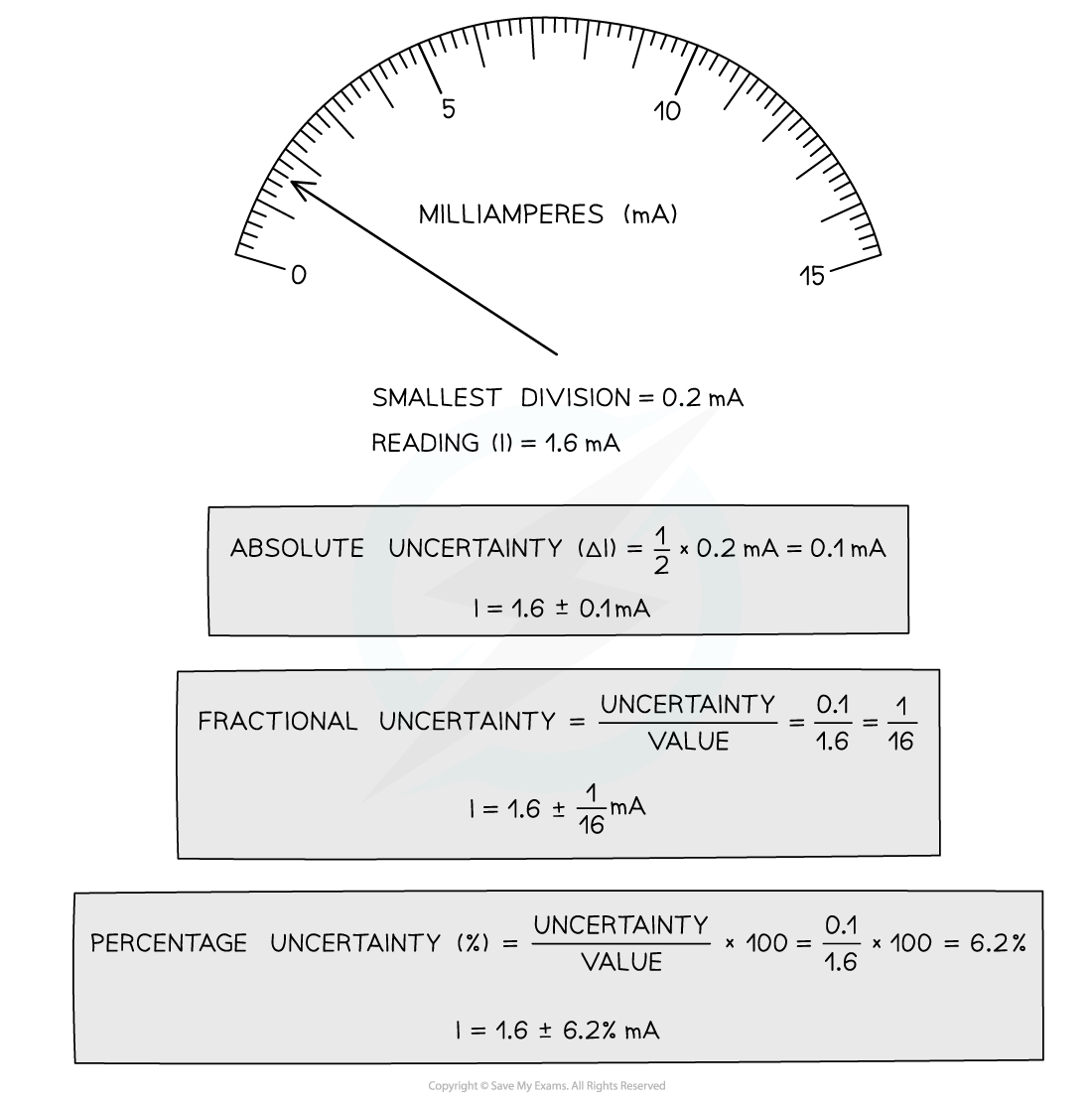Calculating Uncertainty
There is always a degree of uncertainty when measurements are taken; the uncertainty can be thought of as the difference between the actual reading taken (caused by the equipment or techniques used) and the true value
- Uncertainties are not the same as errors
- Errors can be thought of as issues with equipment or methodology that cause a reading to be different from the true value
- The uncertainty is a range of values around a measurement within which the true value is expected to lie, and is an estimate
- For example, if the length of a box is measured multiple times as 12.55 cm, 12.45 cm and 12.51 cm, we can say the length is 12.50 cm with an uncertainty of 0.05 cm,
- This is often written as 12.50 ± 0.05 cm
- These uncertainties can be represented in a number of ways:
- Absolute Uncertainty: where uncertainty is given as a fixed quantity (as above)
- Fractional Uncertainty: where uncertainty is given as a fraction of the measurement
- Percentage Uncertainty: where uncertainty is given as a percentage of the measurement
- To find uncertainties in different situations:
- The uncertainty in a reading (e.g. from a voltmeter): ± half the smallest division
- The uncertainty in a measurement (e.g. from a ruler): at least ±1 smallest division
- The uncertainty in repeated data: half the range i.e. ± ½ (largest - smallest value)
- The uncertainty in digital readings: ± the last significant digit unless otherwise quoted
Diagram showing a reading from an ammeter

Combining Uncertainties
- When combining two measurements that both have uncertainties, the uncertainties have to be combined too
Adding/Subtracting Data
- When adding or subtracting two values with uncertainties, just add the absolute uncertainties
Adding or subtracting data example

Multiplying/Dividing Data
- When multiplying or dividing measurements with uncertainties, add their percentage uncertainties
Multiplying or dividing data example

- Raising to a power – multiply the fractional (or %) uncertainty by the power
Raising to a power example


